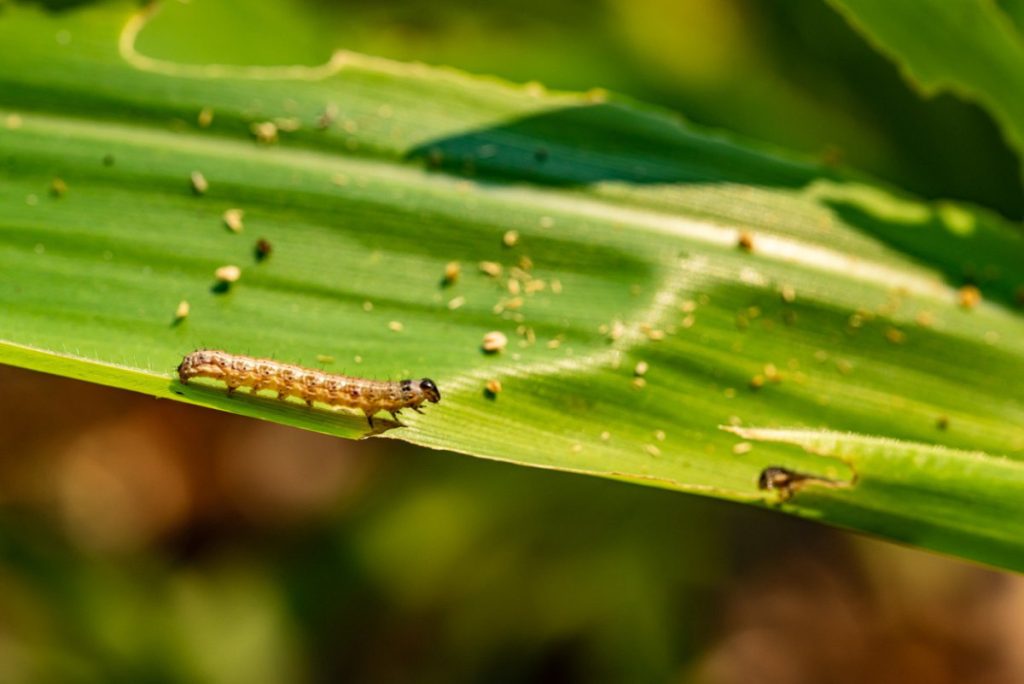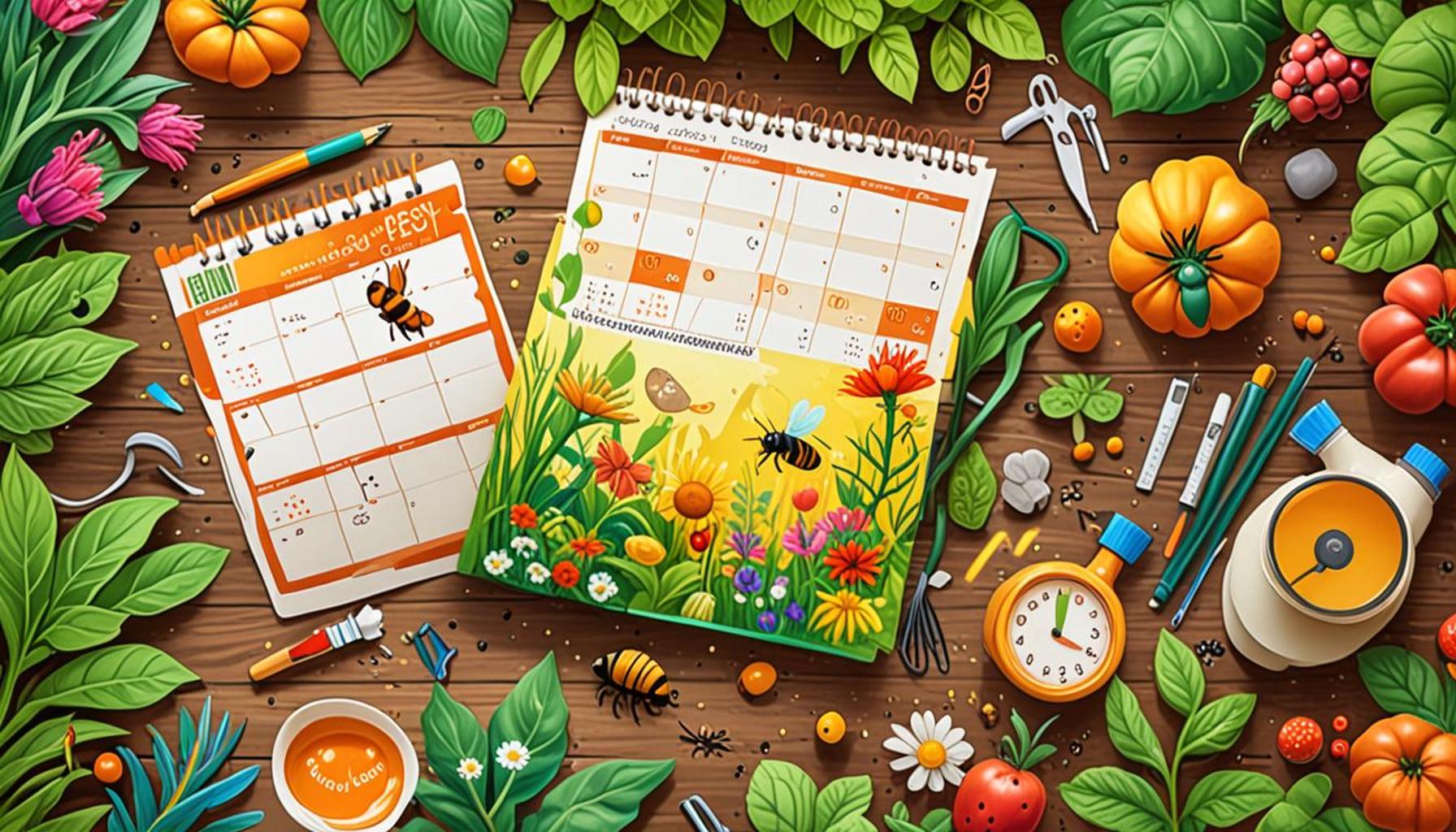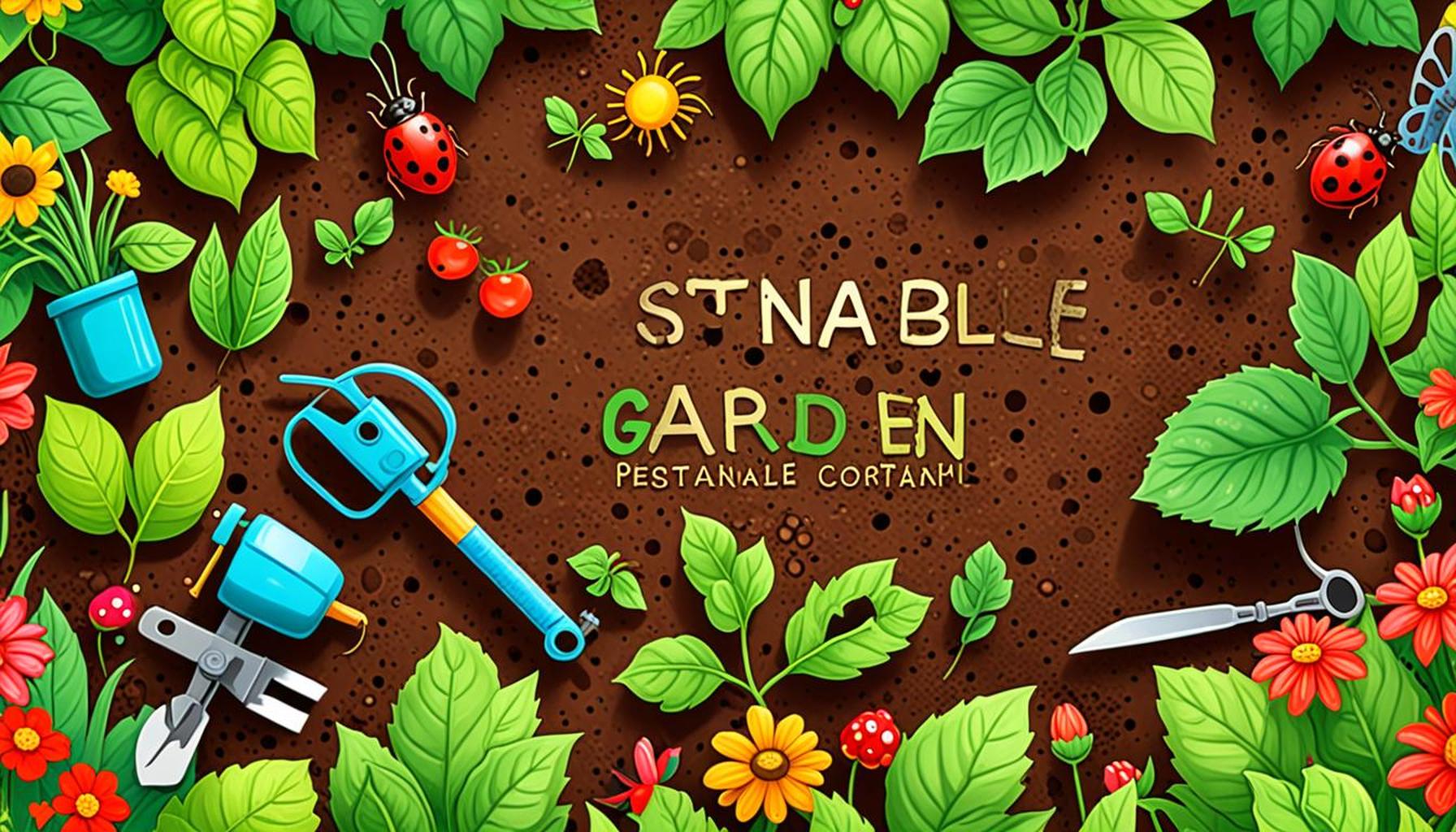Identification and Prevention of Common Pests in Home Gardens

The Importance of Pest Management in Your Home Garden
Maintaining a home garden is an enriching endeavor, yet it comes with the inevitable challenge of common pests that threaten your plants, fruits, and flowers. From leafy greens to vibrant blooms, every aspect of your garden can fall victim to these uninvited guests. Understanding how to identify and proactively manage these nuisances is crucial for a thriving outdoor space.
Identifying Common Garden Pests
To effectively safeguard your garden, it’s essential to know which pests are most prevalent. Here are a few offenders to keep an eye out for:
- Aphids: These tiny, green or black insects are notorious for sucking sap from young plants, leading to stunted growth and curled leaves. A single colony can multiply quickly, so quick identification is vital.
- Spider Mites: These minute arachnids are often overlooked due to their size. They thrive in hot, dry conditions and create fine webbing on plants. Signs of their presence include yellow or stippled leaves—indicators of sap loss.
- Slugs and Snails: Soft-bodied mollusks that enjoy a nighttime feast on your garden. Their trail of slime is a telltale sign, and they can cause significant damage, particularly in moist environments.
- Whiteflies: Unseen until disturbed, these tiny, white-winged insects typically reside on the undersides of leaves and can unleash chaos by sucking plant sap and transmitting diseases.
Consequences of Pests
Each pest brings with it a unique set of challenges, ranging from disease transmission to severe crop loss. For instance, aphids are known vectors for various plant viruses, while spider mites can lead to substantial foliage damage, both drastically reducing your garden’s health and yield.
Effective Prevention Strategies
Implementing proactive prevention strategies can dramatically reduce the likelihood of infestations in your garden. Consider the following approaches:
- Regular Inspections: Make it a habit to inspect your plants weekly. Early detection is key to preventing infestations from spiraling out of control.
- Natural Predators: Encourage beneficial insects like ladybugs and lacewings, which feed on aphids and other pests. Creating a habitat that attracts these allies can provide a natural form of pest control.
- Physical Barriers: Employing row covers or nets can effectively block pests from accessing your plants. This technique is particularly useful for preventing larger pests like birds and deer from feasting on your garden.
- Organic Solutions: Explore eco-friendly pesticides like neem oil or insecticidal soap, which offer a safer approach to managing pests while minimizing harm to beneficial species.
Embrace the Challenge
By enhancing your knowledge about these common garden pests and adopting effective management techniques, you can cultivate a healthier and more productive garden. Take the time to delve deeper into the world of pest management and embrace the beauty of your outdoor space with confidence. Remember, a proactive approach not only fosters growth but also enriches your connection to nature.

DIVE DEEPER: Click here for essential tips
Understanding Garden Pest Behavior
To successfully combat pests in your garden, it’s important to understand pest behavior and the conditions that promote their proliferation. Each pest species exhibits unique habits and environmental preferences that can greatly inform your management strategies. For instance, many pests thrive in specific climates, with warm temperatures and elevated humidity levels significantly enhancing their reproductive rates. A deeper comprehension of these dynamics can facilitate a proactive approach to pest control, rather than a reactive one that often comes too late.
Life Cycles and Activity Patterns
An understanding of a pest’s life cycle can be a game-changer in your prevention efforts. Most common garden pests, including caterpillars, aphids, and beetles, go through a series of developmental stages, which typically include eggs, larvae, pupae, and adults. Recognizing these stages is crucial in identifying the right time for intervention. For example, caterpillars can be particularly destructive during their larval stage, as they consume leaves voraciously, often leading to severe defoliation. In contrast, adult beetles can also inflict significant damage, but understanding their breeding habits may help you target interventions at critical times before their numbers escalate.
Tracking when particular pests are most active can also be beneficial. Some pests, such as the corn earworm, have nocturnal tendencies, meaning they are more likely to feed under the cover of darkness. Understanding these patterns allows gardeners to utilize more targeted strategies like applying natural pesticides at night when pests are most active.
Seasonal Considerations
Seasonality plays a significant role in pest emergence and activity. In many regions of the United States, pests such as aphids and whiteflies typically become prevalent in spring when new growth emerges and tender plants attract their interest. Additionally, as temperatures rise during summer months, these populations can surge, leading to more serious infestations if left unchecked. In the fall, certain pests, like the squash bug, can become particularly troublesome as they seek wintering spots in gardens. Understanding these seasonal patterns will allow you to be proactive, preparing preventive measures before infestations gain the upper hand.
Environmental Factors That Attract Pests
Several environmental factors can attract pests to your garden, making it essential to create conditions that deter their presence. Consider the following factors that can draw pests into your gardening space:
- Water Accumulation: Standing water can become a breeding ground for mosquitoes and other pests. It is crucial to ensure proper drainage around your garden beds to eliminate any puddles or ponds, especially after rainfall.
- Overcrowding: Planting too closely together can create a humid microclimate that favors pests. Proper spacing allows for adequate air circulation and reduces moisture accumulation, both of which are unwelcoming to many pest species.
- Improper Plant Health: Stressed or diseased plants are more susceptible to pest attacks. Regularly check for signs of disease, such as yellowing leaves or wilting, and take steps to maintain overall plant health, like ensuring they receive proper nutrients.
- Companion Planting: Implementing companion planting strategies can attract beneficial insects and deter harmful pests. For example, planting marigolds can repel nematodes and other pests that threaten vegetable crops, while also encouraging pollinators into your garden.
By being aware of the conditions that attract pests to your garden, you can take proactive steps to minimize their presence. A little knowledge about pest behavior can go a long way in maintaining a healthy garden. Effective pest management requires vigilance and constant observation, ensuring your plants have the best chance to thrive despite the ever-present threat of pest infestations.
| Category | Key Features |
|---|---|
| Identification Techniques | Visual inspection, sticky traps, and plant health assessment. |
| Prevention Strategies | Crop rotation, companion planting, and using organic pesticides. |
Identifying common pests in your home garden is crucial for maintaining healthy plants and maximizing yield. Home gardeners can utilize various identification techniques to monitor pest activity effectively. Visual inspections allow for the early detection of pests such as aphids, spider mites, and whiteflies. Additionally, the use of sticky traps helps capture flying insects, giving you a clearer idea of pest populations. Regularly assessing the overall health of plants can also signal underlying pest problems.When it comes to prevention strategies, applying best practices ensures gardens are less inviting to pests. Implementing crop rotation disrupts the life cycles of pests by changing the plant families grown in a particular area. Companion planting—pairing plants that benefit each other—can also deter unwanted visitors while promoting growth. Organic pesticides serve as a more environmentally friendly option to manage pest issues without harming beneficial insects. These methods not only protect your garden but also enhance plant resilience against common pests.
LEARN MORE: Click here for more insights
Effective Strategies for Identifying and Preventing Garden Pests
Having a robust methodology for identifying and preventing garden pests can help maintain a flourishing home garden. Successful pest management relies on regularly monitoring your plants and recognizing early signs of pest activity. Adopting a few practical strategies can vastly improve your garden’s health and yield.
Regular Monitoring and Inspection
One of the most effective ways to identify pests is through consistent monitoring of your garden. Check under leaves, on stems, and near the soil for any signs of pest activity or damage. Look specifically for nibbled leaves, webbing, sticky residue, or black spots, all of which could indicate a pest presence. Many pests, such as mealybugs or aphids, often go unnoticed until their populations explode, making early detection crucial. Create a habit of visually inspecting your plants at least once a week. Not only will this help in identification, but it will also permit you to observe any environmental changes that could favor pest invasions.
Utilizing Traps and Monitoring Devices
Another effective tool in identifying pests is the use of traps. For instance, sticky traps can catch flying pests like whiteflies or fungus gnats, while bait traps can help in assessing the presence of slugs or other crawling insects. You can also utilize pheromone traps designed specifically to target particular pests, making monitoring even more efficient. By placing these devices strategically throughout your garden, you can gather valuable data on the types and numbers of pests present, helping you stay ahead of potential outbreaks.
Physical and Cultural Control Methods
Preventing pests can often be achieved through physical barriers and cultural control methods. Floating row covers, garden nets, or insect mesh can effectively exclude pests from reaching your plants. These barriers work particularly well for flying insects and larger pests like deer or rabbits. Additionally, practicing crop rotation can reduce the likelihood of pests establishing themselves in your garden soil. This is particularly effective for soil-borne pests or diseases, as rotating crops disrupt their life cycles.
Another cultural practice worth adopting is timing your planting. For example, many pests are less prevalent during certain seasonal windows. By planting your crops earlier or later than typical schedules, you can circumvent peak pest activity times. In some areas of the United States, planting resistant varieties can also minimize pest problems. For instance, certain tomato varieties exhibit natural resistance to common tomato pests like the tomato hornworm, providing another layer of defense.
Organic and Natural Solutions
For those looking towards environmentally friendly alternatives, organic pest control methods offer compelling options. Natural insecticides made from plant oils or natural compounds can deter pests without harming beneficial organisms. Products containing neem oil or pyrethrins are popular organic choices that disrupt pest activity effectively. Moreover, encouraging beneficial insects, such as ladybugs, lacewings, and predatory wasps, can offer a sustainable solution to pest management. These allies naturally feed on pest populations, reducing the need for chemical intervention.
Lastly, maintaining a diverse array of plants can deter pests through biodiversity. Interplanting vegetables with aromatic herbs like basil or mint has been shown to confuse and repel several pest species. In doing so, you bolster your garden’s resilience against infestations.
By employing a combination of monitoring techniques, physical barriers, cultural practices, and organic solutions, you can create an effective framework for the identification and prevention of common pests in home gardens. This multifaceted approach will not only protect your plants but also foster a thriving garden ecosystem.
DISCOVER: Click here to learn about low-maintenance plants
Conclusion: Nurturing a Pest-Free Home Garden
In the pursuit of a vibrant and productive home garden, the identification and prevention of common pests stand as essential pillars of successful gardening. Regular monitoring and timely inspection can unveil potential threats before they escalate, while the use of traps enhances our ability to stay informed about pest populations. By incorporating physical barriers and cultural practices, such as crop rotation and strategic planting, gardeners can create an inhospitable environment for pests to thrive.
Moreover, the shift towards organic and natural solutions not only helps in managing pest populations sustainably but also promotes the preservation of beneficial insect species. This dual approach fosters biodiversity, which adds resilience to the garden ecosystem. Understanding and implementing these strategies empower gardeners across the United States to take proactive steps against pest infestations, leading to a healthier and more fruitful harvest.
Ultimately, a successful home garden is one characterized by balance — a place where plants can flourish without the overwhelming influence of unwanted pests. By continually educating ourselves and adapting our methods, we can cultivate a thriving garden that not only provides sustenance but also enhances our connection to nature. Armed with knowledge and strategies for pest identification and prevention, your garden can become a sanctuary of growth and beauty in your own backyard.


